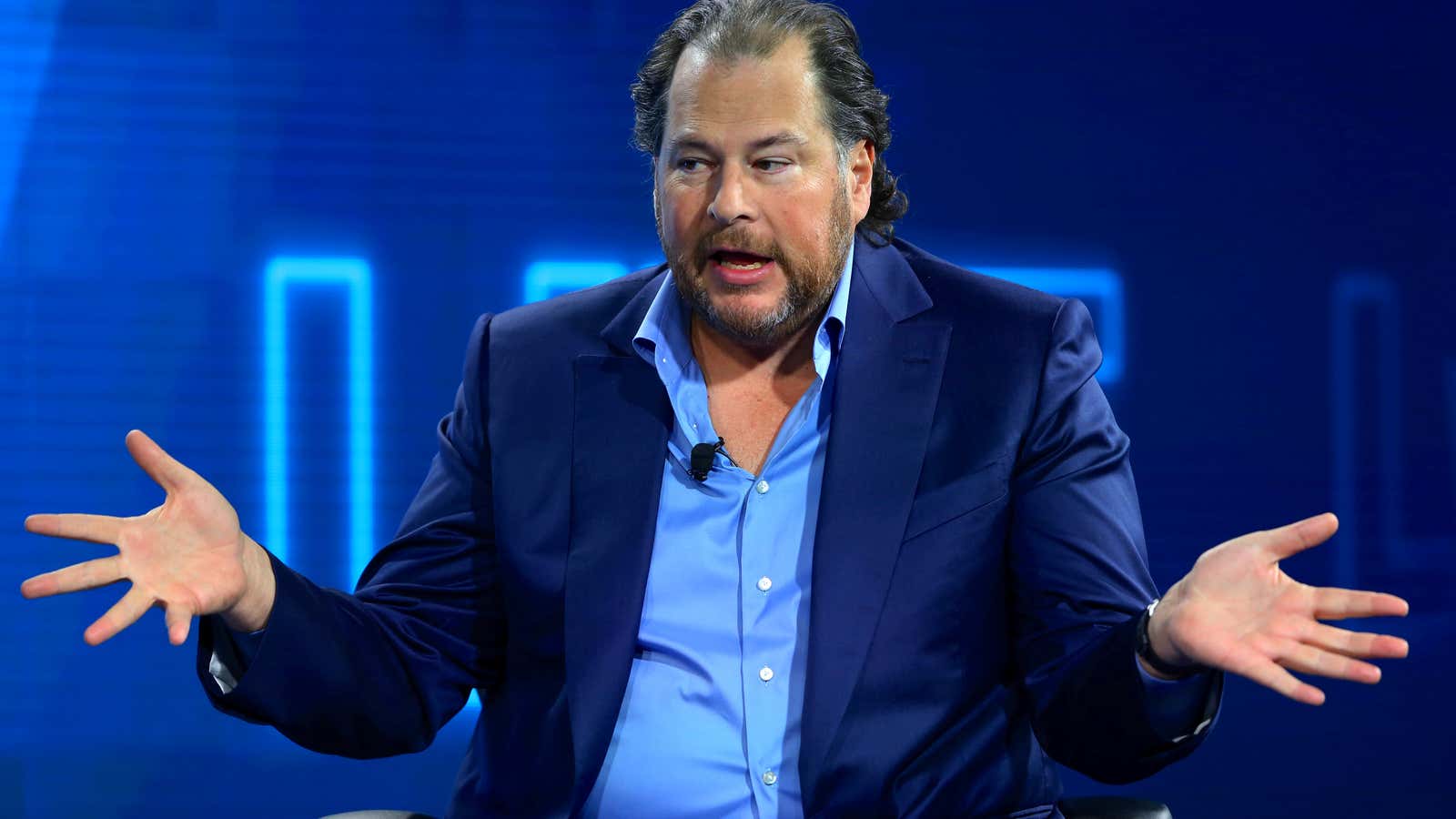Companies under pressure (paywall) to close the gender pay gap might want to look to Marc Benioff, chairman and CEO of Salesforce. The head of one of the world’s largest companies, with a market cap of $66 billion, just ranked second on a top 10 list of “Global Champions of Women in Business” compiled by the Financial Times and HERoes, a workplace diversity advocacy group.
In the US, women working full-time made just 80.5% of men last year. While that gap is closing, with women starting to earn more and men a little less, the gulf remains.
Closing the gap at Salesforce, according to the Financial Times and HERoes, started with an equal pay assessment in 2015 to see if men and women were paid equally. The assessment found that wages for both men and women needed adjusting, and resulted in $3 million being spent to “eliminate statistically significant differences in pay.” In 2017, the company redid the assessment and spent another $3 million to rectify new pay discrepancies, with Benioff to continue monitoring future gender pay gaps.
While a lot of companies toil over policies to promote workplace diversity and equal pay, few invest major sums to immediately fix the problem. Benioff, who signed the White House’s Equal Pay Pledge, also requires that 30% of the attendees of every company meeting be women, and grants equality awards for trailblazers on equal rights in business, government, and nonprofits. The company has also been recognized as a top employer for women across different rankings.
First place on FT and HERoes list went to Rana Ghandour Salhab, a partner in talent and communications at Deloitte Middle East.
Salhab achieved a number of firsts within the company: She was first woman elected to the board of directors of Deloitte in the Middle East region, the first on the regional executive committee, and only one of the first two women admitted as partner in the history of the firm (of over 90 years). Along her career path she also created a female advancement program called DRAW in 2007, which increased the ratio of women to men in the firm across Arabian Gulf countries and elsewhere in the Middle East and North Africa.
